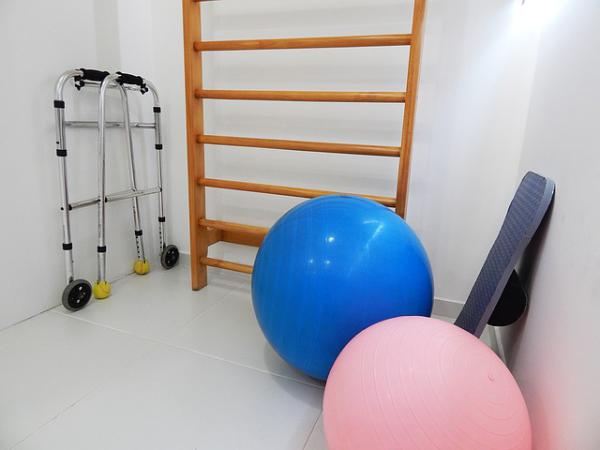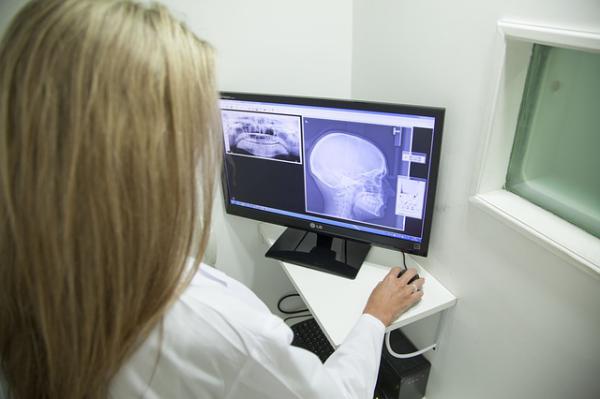Latest News and Information
Physical Therapist in Cheyenne Discusses Who Can Benefit From Physical Therapy
February 21, 2018
The act of physical therapy is something that a wide range of individuals and groups of people can benefit from. Often, people assume that physical therapy is only for the elderly or those dealing with serious injuries, but this is simply not the case. While those are two primary groups that do receive PT, according to a physical therapist in Cheyenne, there are a plethora of different people who can benefit from physical therapy.
Leg and arm injuries are incredibly common across a wide variety of sports, and can greatly benefit from the assistance of a physical therapist. But injuries to the head, such as a concussion, can also be treated by the services of a physical therapist.
If a person with a neurological disorder or injury does not receive treatment from a physical therapist, they may lose certain functions, may be unable to perform basic functions, and may eventually lose a degree of their independence. Decreased functioning may also impact other areas of a person’s life, and can lead to other health complications as a result.
After doing a comprehensive assessment of a person’s condition, a physical therapist will work to help a patient regain these functions and help them live an independent life again. Individuals who are struggling from things such as parkinson’s disease, strokes, and other type of brain injuries can all benefit immensely from receiving physical therapy treatment.
If you are in need of physical therapy, or have questions about what physical therapy consists of, contact North Platte physical therapy today and we will be happy to assist you with your first steps towards recovery.
Read More...
Sports Injuries
If you are dealing with the repercussions of a serious sports’ injury, physical therapy can be an essential part of your recovery process. A physical therapist will be able to assess your individual situation and recommend a treatment plan that will ensure the most speedy and effective recovery.Leg and arm injuries are incredibly common across a wide variety of sports, and can greatly benefit from the assistance of a physical therapist. But injuries to the head, such as a concussion, can also be treated by the services of a physical therapist.
Pediatric Conditions
For individuals who are dealing with a variety of health issues stemming from pediatric conditions, physical therapy can be a great way to aid and assist these folks. Conditions such as developmental delays, cystic fibrosis, and cerebral palsy can all be treated by some form of physical therapy.Musculoskeletal Dysfunctions
For people who struggle with some sort of back pain, physical therapy can be a great way to alleviate pain and reduce the occurrence of nagging symptoms that can be a great burden to an individual at times. Individuals who are dealing with a rotator cuff injury can be a prime candidate for receiving physical therapy treatment.Neurological Disorders
Nerve-related conditions can be a major headache for individuals at times, and can greatly impact a person’s ability to function. Physical therapists, specifically those trained in the field of neurology, can reduce the prevalence of symptoms from neurological disorders. In doing so, they can help a person regain a sense of normalcy in their life that previously seemed to have been lost due to the condition.If a person with a neurological disorder or injury does not receive treatment from a physical therapist, they may lose certain functions, may be unable to perform basic functions, and may eventually lose a degree of their independence. Decreased functioning may also impact other areas of a person’s life, and can lead to other health complications as a result.
After doing a comprehensive assessment of a person’s condition, a physical therapist will work to help a patient regain these functions and help them live an independent life again. Individuals who are struggling from things such as parkinson’s disease, strokes, and other type of brain injuries can all benefit immensely from receiving physical therapy treatment.
If you are in need of physical therapy, or have questions about what physical therapy consists of, contact North Platte physical therapy today and we will be happy to assist you with your first steps towards recovery.
Tips for Managing TMD from Your Physical Therapist in Cheyenne, WY
February 14, 2018
If you suffer from a temporomandibular joint disorder, also known as TMD, you may be dealing with some uncomfortable systems. Good news—there are things you can do to cope. Don’t suffer in silence! Make sure you are working with your doctor, dentist, and local physical therapist in Cheyenne, WY to create solutions. In addition, here are some top tips that help others coping with this disorder that you can take advantage of to enhance your quality of life.
To help you treat your TMD pain, North Platte Physical Therapy is here to help. We have several locations to accommodate you wherever is convenient to you! Contact us today to set up your appointment.Â
Read More...
Mouth Guards
Many people that suffer from TMD also have bruxism. This is when a person grinds their teeth or clenches their jaw while sleeping. Since you don’t have control over this when you sleep, this is where a mouth guard comes into play. While you can buy some at the store, it is best to work with your dentist on getting a fitted mouth guard that is specifically made for your mouth.ÂAcupuncture
TMD causes headaches and other facial pain, which is unpleasant. Studies have shown that some Americans benefit from acupuncture to treat this pain. This is done through needles strategically placed in areas such as the jaw or around the ear. It is said that it will correct the flow of energy. Wondering if this might be helpful for you? Understanding acupuncture is your first step of making a decision.Heat or Cold Therapy
Depending on the type of pain you have with your TMD, you can treat symptoms with heat or cold. Which is best? If you feel sore, but are not in severe pain or experience inflammation, opt for heat therapy. You can use a hot towel, hot pack that you purchase from the store, or another form of heat that you can rest on the area. For more intense pain, cold therapy may be your go-to. It can reduce inflammation.Physical Therapy and Exercises
Seeing a premier physical therapist is also a key treatment to treating your TMD symptoms. They will work with you to create a customized plan on various exercises that will help you learn to relax muscles, especially any tight muscles causing pain or headaches.Massage Therapy
Another way your local physical therapist can help you with your TMD is through massage therapy. Physical therapists use a variety of massage techniques to release tension in the area. It can reduce or alleviate any friction, tightness, and soreness you are experiencing.Medications and Oils
When discussing your TMD with your doctor, they may recommend putting you on medication to treat your symptoms. Some of these medicines include anti-inflammatories or pain relievers such as ibuprofen. Your doctor may also prescribe you a muscle relaxer to help ease the muscles in your area. If you have never taken a muscle relaxer before, they cause drowsiness for some, so be sure to take them when you do not have anything going on in case you become sleepy! Another option in addition to medication that can use to treat pain are oils. You can find headache oils at your local drug store that you can dab around your temples to help reduce tension.To help you treat your TMD pain, North Platte Physical Therapy is here to help. We have several locations to accommodate you wherever is convenient to you! Contact us today to set up your appointment.Â
What To Know About Your First Physical Therapy Visit From a Physical Therapist in Cody, WY
February 7, 2018
Seeking treatment from a physical therapist can be appear intimidating at first. Any time you enter a medical office for the first time, you may have a variety of questions and concerns regarding what to expect from your experience. While anything that is new can initially seem like a scary process, this does not need to be the case, specifically if you are seeking services from your physical therapist in Cody, WY.
During your initial intake, you will be asked to fill out a brief medical history. This is done so the practitioner has a fuller understanding of your medical needs, and will be better prepared to assess any potential medical issues that you may be dealing with.
Your physical therapist will ask you what level of pain you are experiencing, as well as what aggravates this condition and what eases your level of pain. Your practitioner will also ask what types of activities bring on this level of pain, and will ask you how this is impacting your daily activities. Your therapist will also ask you to list some goals for your treatment plan, as they will want to work with you towards your personalized plan for recovery.
Additionally, your therapist may perform a neurological screening to see how your nerves are communicating with your muscles, as this can be a major component in regards to your level of pain. As a part of this, your reflexes may be assessed. A practitioner may also decide to perform a series of special test in order to rule out any other potential problems that may be contributing to the issue.
All of these tests are done to assist the physical therapist in deciding what level of treatment and what types of treatment are necessary. A plan will be formulated between the practitioner and the patient, to ensure that the quality of treatment meets the individual needs of the patient.
If you are in need of physical therapy, or have questions about what physical therapy consists of, contact North Platte physical therapy today and we will be happy to assist you with your first steps towards recovery.
Read More...
What Will Happen During Your First Visit
When visiting your physical therapist for the first time, be sure to bring all the necessary paperwork with you to your first appointment. This would include documents related to your referral to services, as well as any pertinent information that your physical therapist could find useful in regards to treating you. Please have your insurance card handy, as this will be a requirement in order to receive services.During your initial intake, you will be asked to fill out a brief medical history. This is done so the practitioner has a fuller understanding of your medical needs, and will be better prepared to assess any potential medical issues that you may be dealing with.
Your physical therapist will ask you what level of pain you are experiencing, as well as what aggravates this condition and what eases your level of pain. Your practitioner will also ask what types of activities bring on this level of pain, and will ask you how this is impacting your daily activities. Your therapist will also ask you to list some goals for your treatment plan, as they will want to work with you towards your personalized plan for recovery.
Objective Evaluation
Your physical therapist will likely perform a series of evaluations in order to better determine what level of treatment is required. This may include a range of motion test, where your therapist will move the joints to determine the quality of movement and if there are any restrictions. They may also perform a palpitation test to check for the presence of tenderness, swelling, and inflammation.Additionally, your therapist may perform a neurological screening to see how your nerves are communicating with your muscles, as this can be a major component in regards to your level of pain. As a part of this, your reflexes may be assessed. A practitioner may also decide to perform a series of special test in order to rule out any other potential problems that may be contributing to the issue.
All of these tests are done to assist the physical therapist in deciding what level of treatment and what types of treatment are necessary. A plan will be formulated between the practitioner and the patient, to ensure that the quality of treatment meets the individual needs of the patient.
If you are in need of physical therapy, or have questions about what physical therapy consists of, contact North Platte physical therapy today and we will be happy to assist you with your first steps towards recovery.
Using Wheatland, WY Physical Therapy and All Other Locations to Treat Your Child's ADHD
January 31, 2018
If your child has been diagnosed with attention deficit hyperactivity disorder, ADHD, they are not alone. On average, about six to 10 million American children live with it. In addition to working with your doctor, did you know that Cheyenne, WY physical therapy can also help treat your child? It’s one of the many ways that can help them during their youth. Learn more about ADHD in children, various treatment options, and how you can incorporate physical therapy into their routine.
If some of these symptoms seem familiar, research further by reviewing these 14 signs of attention deficit hyperactivity disorder, and contact your doctor. There are many options your child has to manage their ADHD.
From there, your doctor will help you and your child by creating a plan. In many cases, this will include medicine that will help them cope. This can include a stimulant which can help to reduce the hyperactivity.
Your doctor may also recommend behavioral therapy to help them learn important ways to better manage their time and how to combat impulsions. They can also help create plans for the entire family to work together.
When it comes to any of your pediatric therapy needs, North Platte Physical Therapy can help. We work with all children in a variety of settings. From strengthening fine motor skills and cognitive development, to social skill training, we can create plans to help your child as they grow. Contact us today to schedule a time at a location near you.
Read More...
Overview of ADHD in Children
ADHD is a condition that affects a child’s part of the brain that controls their attention span and activity. While most children often have much more energy than adults, it can appear that those with ADHD have issues focusing, therefore causing:- Increase in movement: Fidgeting and issues staying still is common in children with ADHD.
- Difficulty paying attention: Children will have issues concentrating and maintaining tasks. From school work to chores, they may start to wander off, or seem to be forgetful.
- Impulsive or impatient: It is common for children to jump in or interrupt at inappropriate times when they have ADHD. They are ready to move or get to the next step. Several children also do not always finish tasks they are working on as their attention may move to something else.
If some of these symptoms seem familiar, research further by reviewing these 14 signs of attention deficit hyperactivity disorder, and contact your doctor. There are many options your child has to manage their ADHD.
Treatment Options
To determine if your child has ADHD, your doctor will conduct a variety of tests and ask questions. This can include a normal exam to observe their motor skills, aptitude tests, EEG to review brain waves, and more.From there, your doctor will help you and your child by creating a plan. In many cases, this will include medicine that will help them cope. This can include a stimulant which can help to reduce the hyperactivity.
Your doctor may also recommend behavioral therapy to help them learn important ways to better manage their time and how to combat impulsions. They can also help create plans for the entire family to work together.
Incorporating Physical Therapy
Keeping active is a great way to help children with ADHD. Many do not realize physical therapy is a great addition to your child’s plan to manage their ADHD. An increase in incorporating various types of exercises and activities into your child’s daily routine has shown positive signs to reducing the severity of their day to day issues from the condition. Upon receiving a diagnosis, contact your local physical therapist and set up an appointment to create a plan specific for your child.When it comes to any of your pediatric therapy needs, North Platte Physical Therapy can help. We work with all children in a variety of settings. From strengthening fine motor skills and cognitive development, to social skill training, we can create plans to help your child as they grow. Contact us today to schedule a time at a location near you.
Is Your Back Pain Caused by a Disc Bulge? Ways Casper Physical Therapy Can Help
January 24, 2018
Do you have consistent lower back pain, that isn’t getting better with time? Is some of the pain even radiating down your legs and into your feet? It is best to visit your doctor to see if you have a bulging lower back disc. Over time it can become a herniated disc, with pain that can also travel to other areas, including the legs and feet. It is best to know the signs and symptoms of a bulging disc and act quickly, methods and proper steps to take for recovery, and how local Casper physical therapy can help.
Once a disc is bulging, its internal gel-like fluid in the disc is pushed out, causing it to protrude out of place. Because of its location at the bottom of the spine, the area’s many nerve endings make any small thing even more painful. Symptoms are not severe at first, and worsen over time. Some of the top bulging disc symptoms include:
It is important that you don’t let pain and discomfort persist, get help from a physical therapist. Your go-to physical therapy office, North Platte Physical Therapy, can help you get on track and on your way to recovery. Don’t deal with pain—contact us today and schedule your appointment.
Read More...
Signs and Symptoms
Discs are located in between vertebrae and are the cushions that absorb motion and shocks. Over time or due to certain movements, those discs can become weaker causing them to swell. It could be from improper lifting techniques or just use over time.Once a disc is bulging, its internal gel-like fluid in the disc is pushed out, causing it to protrude out of place. Because of its location at the bottom of the spine, the area’s many nerve endings make any small thing even more painful. Symptoms are not severe at first, and worsen over time. Some of the top bulging disc symptoms include:
- A sharp pain during certain movements that feels like an electrical shock
- Numbness or tingling in the back, or even down the legs and feet
- Radiating pain in the lower back area
- Muscle spasms
- Cramping in the back or legs
- Weakness and difficulty walking or other movements
Taking Proper Steps
Upon the first signs of having an issue, see your doctor. You do not want the bulging disc to rupture, as it will cause even more pain in the lower back, legs and feet. What is a ruptured disc and how is it treated? It is important to learn about it, and avoid getting to that point. Be sure to follow their specific instructions to ensure a speedy recovery that will improve the quality of your condition. In addition, you can also:- Use anti-inflammatories (as recommended by your physician) to reduce swelling in the area
- Use a brace to provide extra support to your lower back
- Take it easy and avoid excessive use
- Have proper posture when sitting in a supportive chair
- See a physical therapist
Recovering with Physical Therapy
A premier physical therapist can assess your personal situation and create a plan for your recovery. This can be done through a series of exercises for the area, massage therapy, decompression, and more. This will help to lower the amount of swelling in the lower back, therefore relieving a lot of pain. It can also strengthen that muscle again, and hopefully you will not have to go through the problem again if you maintain it properly.It is important that you don’t let pain and discomfort persist, get help from a physical therapist. Your go-to physical therapy office, North Platte Physical Therapy, can help you get on track and on your way to recovery. Don’t deal with pain—contact us today and schedule your appointment.




